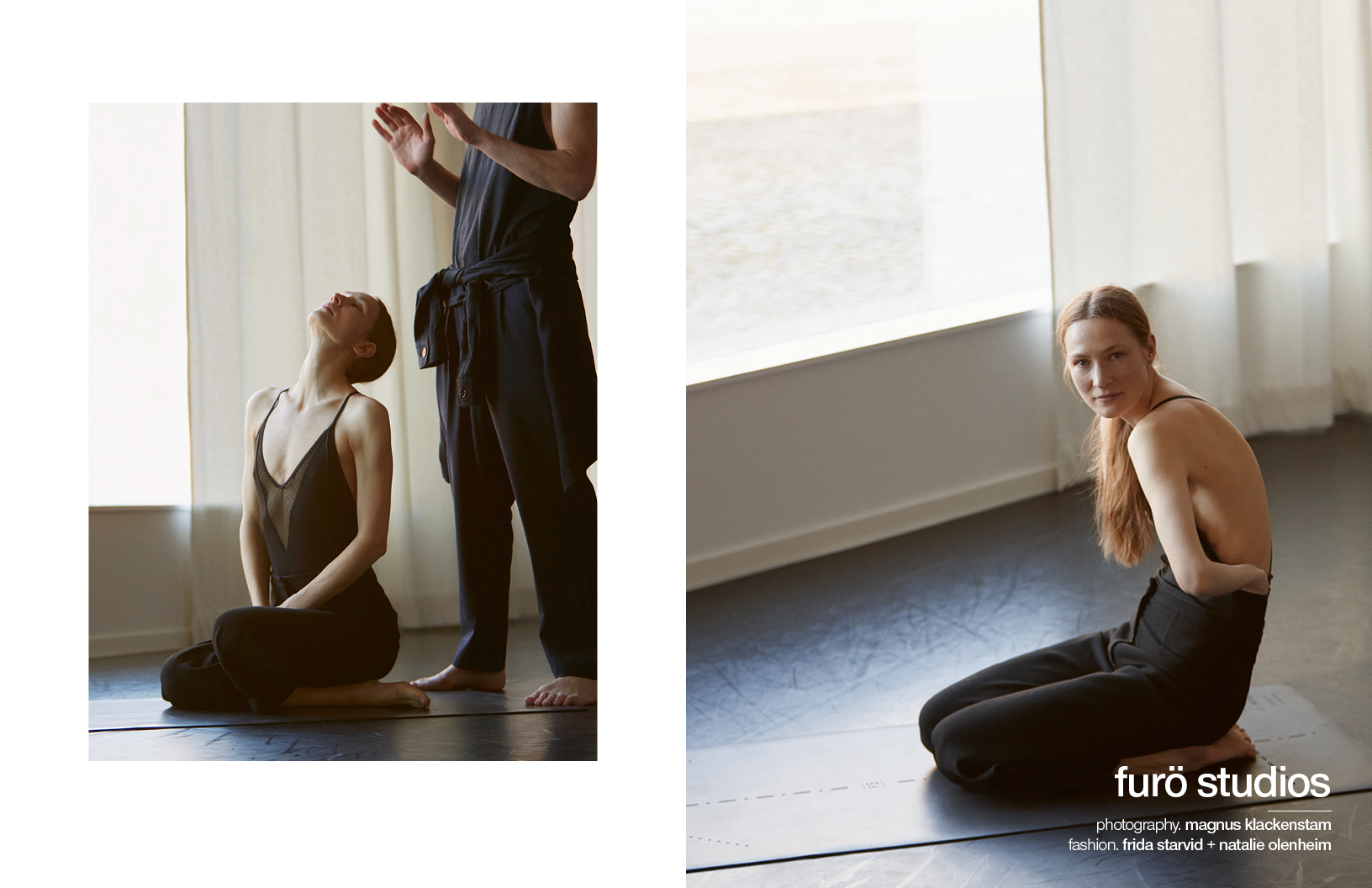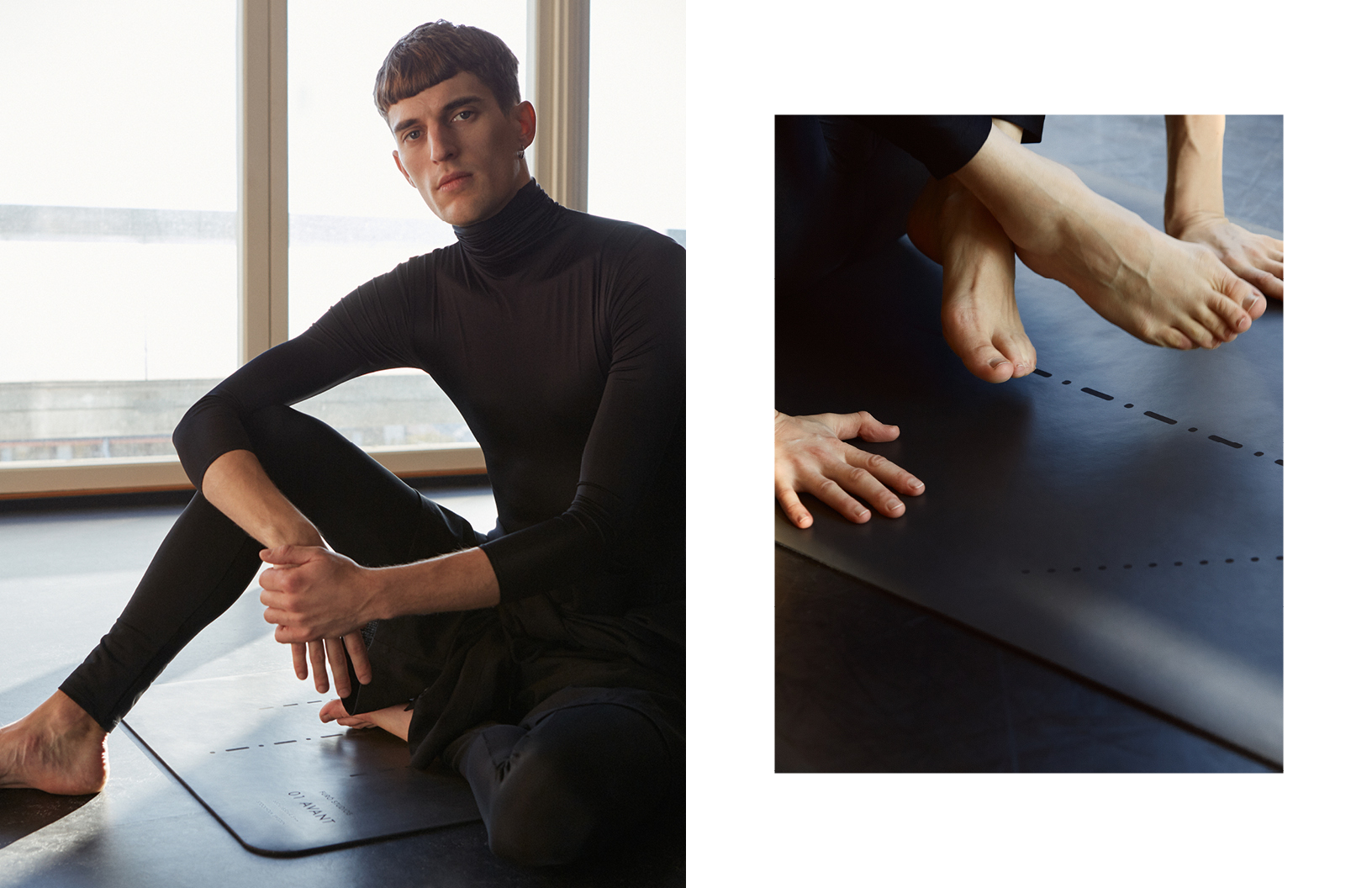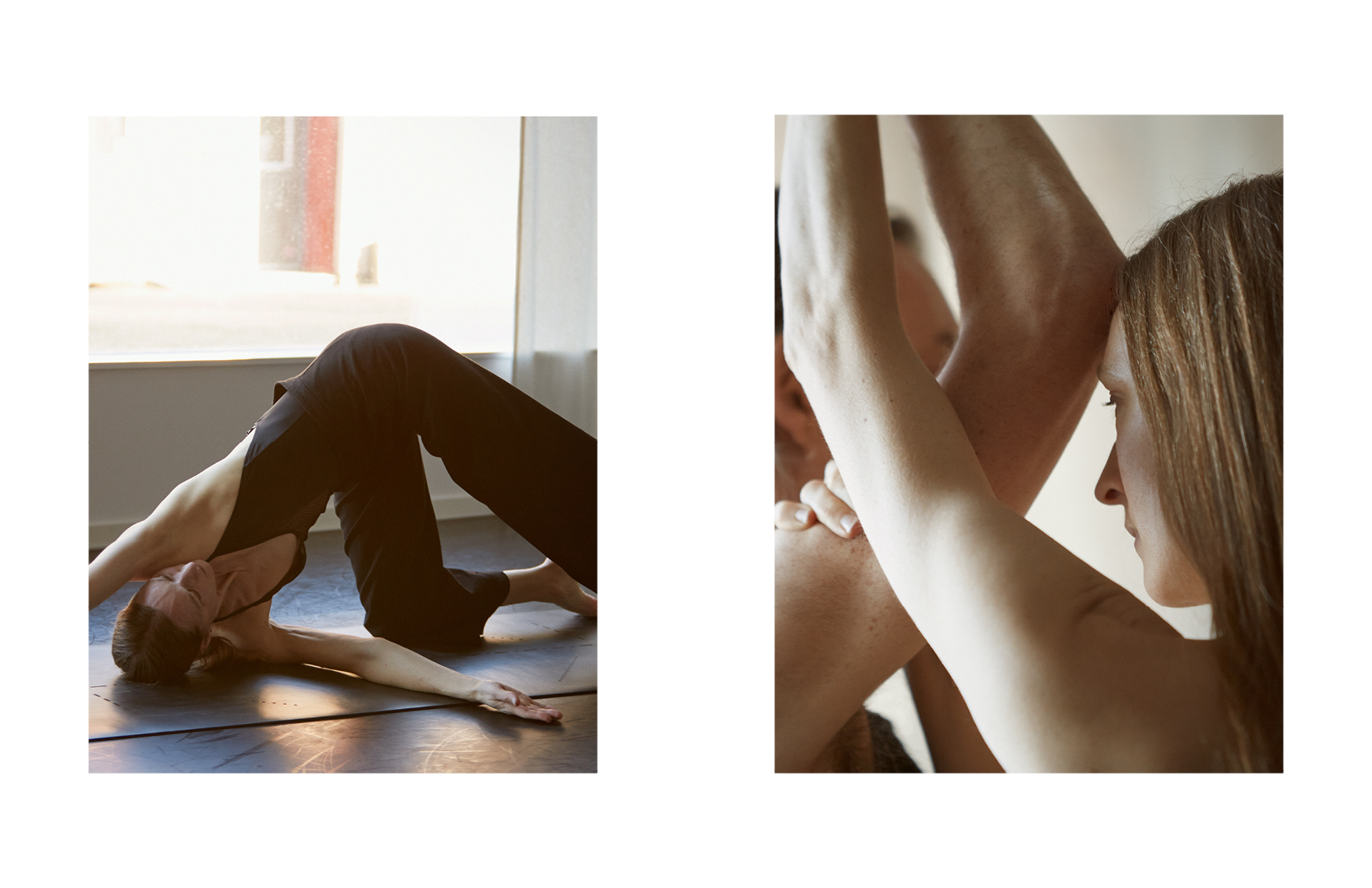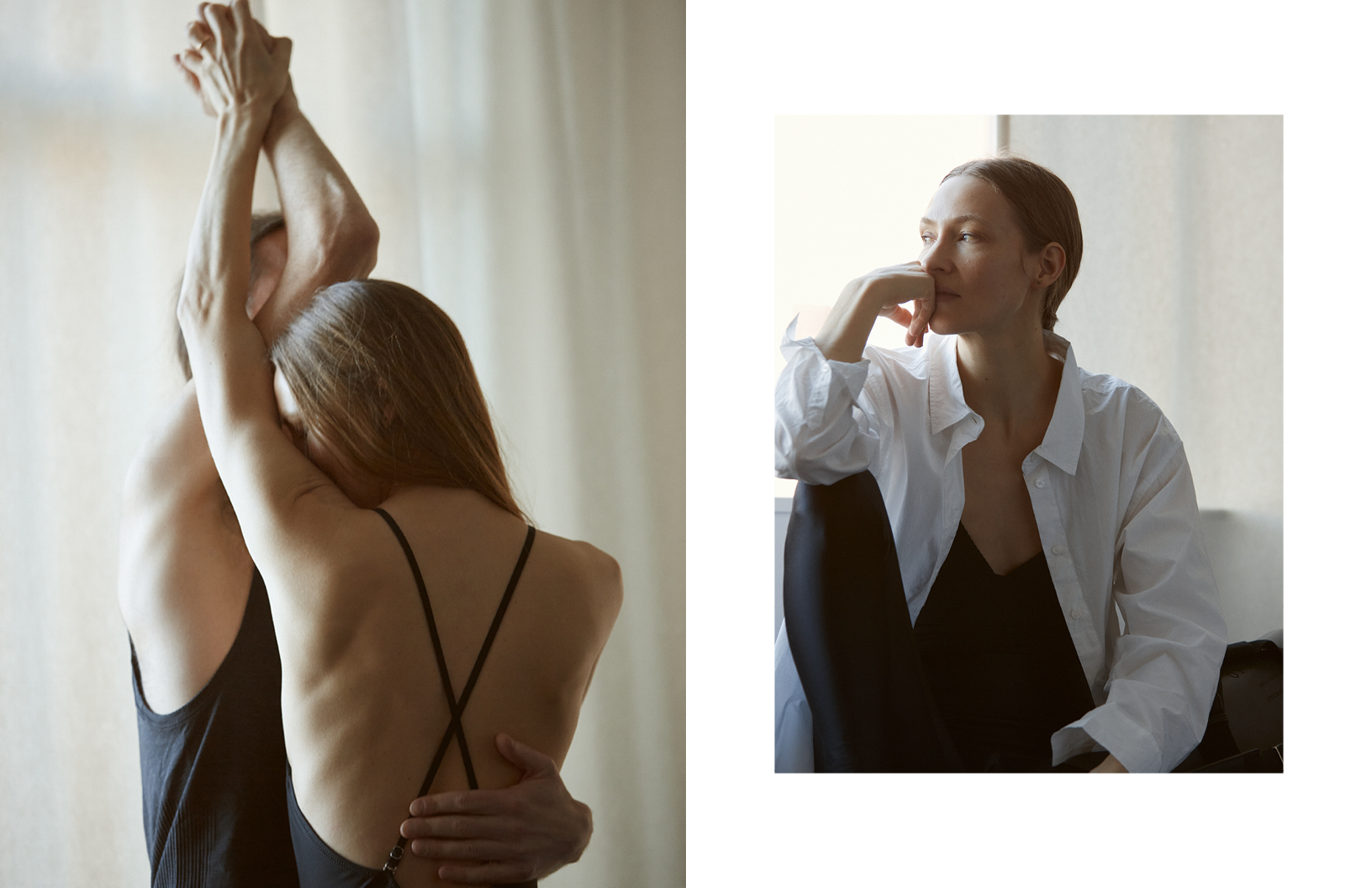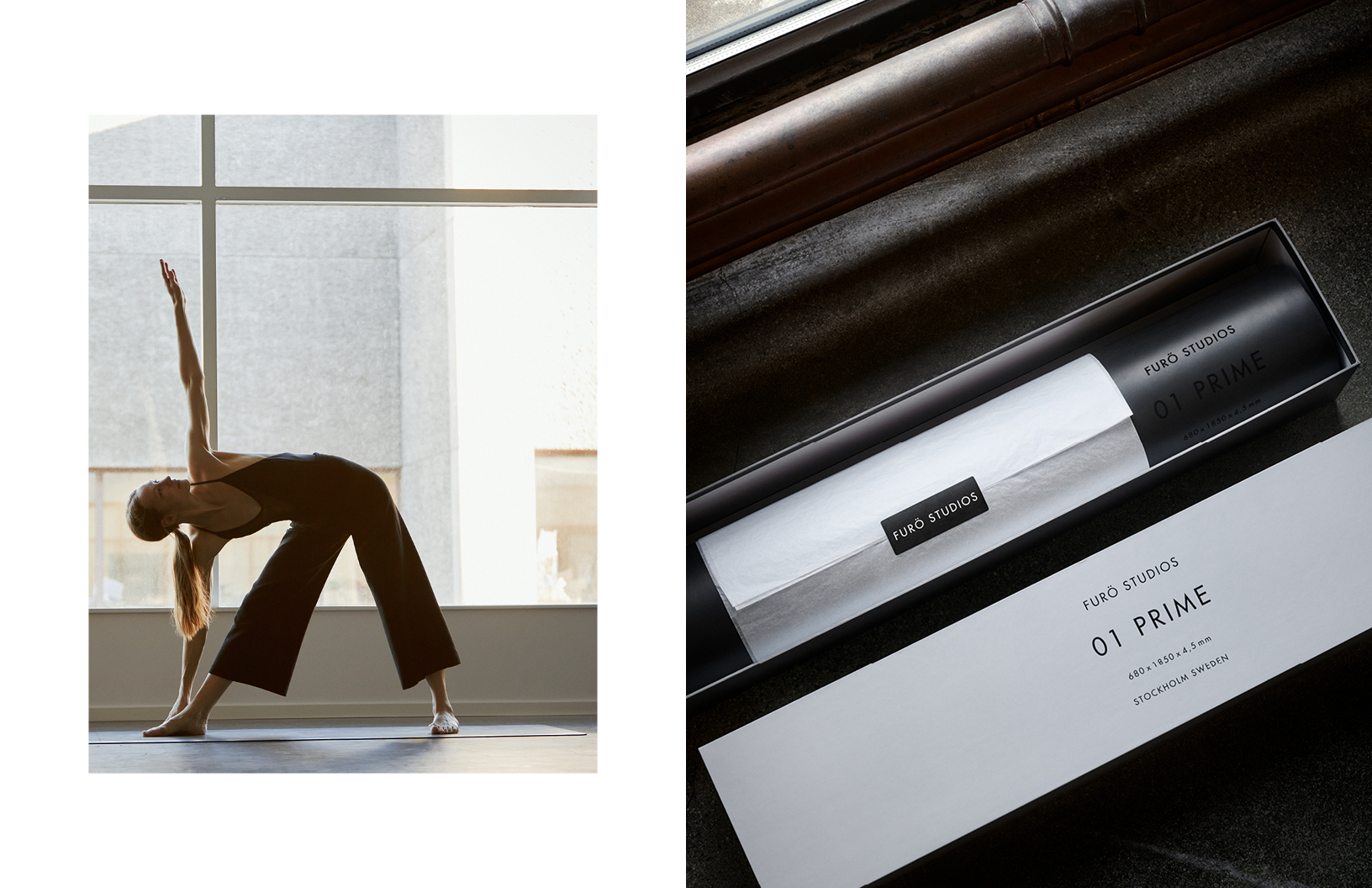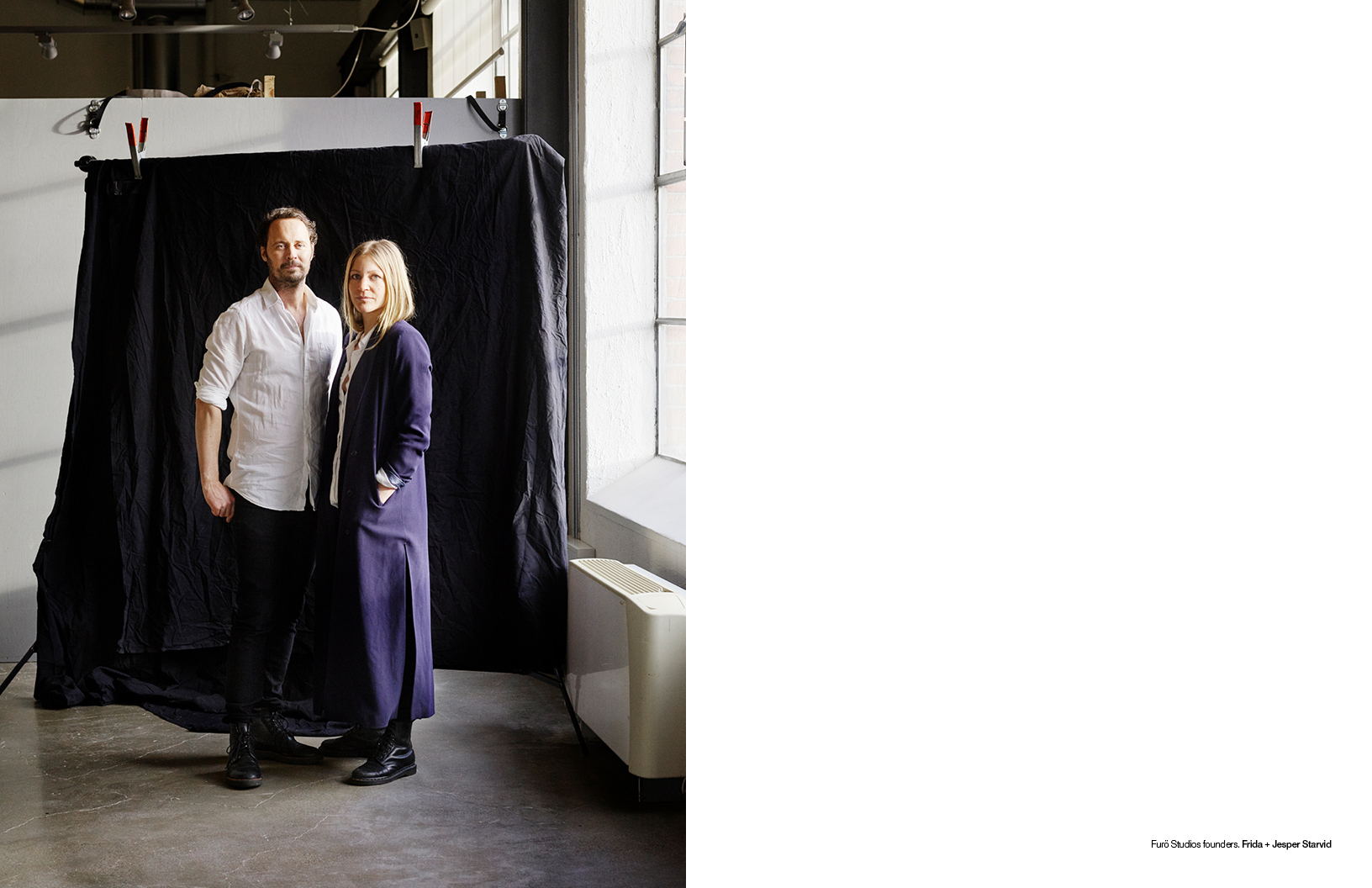Finnish architect Juhani Pallasmaa once said that “Gravity is measured by the bottom of the foot.” As humans, we connect to our environment not only through touch, but through all of our senses at once. Aligning those senses is one of the many goals of yoga, something that designers and Furö Studios founders Jesper and Frida Starvid can attest to firsthand. Now, Jesper and Frida are releasing a brand new line of yoga-centred products to better connect people to their world, themselves and to reshape their relationship with the ancient practice.
Viewing the current landscape of yoga materials, the duo behind Furö Studios decided to rebuild the yoga ecosystem from the ground up. As experienced yoga practitioners, they knew the shortcomings that current yoga offerings posed — poor quality materials, non-inclusive sizing and other factors that made both entry into yoga and continuing the practice difficult. Rather than simply design one or two products to fill this void, Jesper and Frida envisioned a new environment for yoga practice.
Their output under the Furö Studios name is both design- and human-oriented, consisting of a range of yoga-centric products and experiences that more easily connects practitioners with this beloved art. Schön! spoke with Frida to get a better understanding of Furö Studios and to hear what the team has planned for the future.
What inspired the creation of Furö Studios?
It was inspired by a few different things — I was in India working on a Yoga Teacher Training when Jesper came to visit over Christmas and New Year’s 2017. I had finally come to the end of recovery after a severe stress-related burnout a couple of years earlier, and around this point I finally felt back to normal — mentally and physically. My creativity had been pretty much buried since that burnout, but it was as if I felt a spark growing inside. A lust to do something, to create something, and fortunately Jesper felt the same.
The creative process for both of us is something that comes from within — regardless of if the result is a painting or a sculpture or a building. Or as in this case, a brand. Being in India we had surrounded ourselves with things brought from home to make us feel more comfortable, even though we were pretty much living in a shack. The only thing that stood out was the yoga mat — an object that I used every day. It looked like most mats do — colourful, shabby, frayed, with some lotus flowers on — and for no reason, it suddenly occurred to us, why is it that this particular object had not been taken care of design wise? What sort of concepts are tied to the practice of yoga that so blatantly produces products that are so ill taken care of? Apart from inspiring interesting thoughts, in our minds, this made for an obvious gap in the market that we felt compelled to fill.
Generally speaking, how does Furö Studios approach yoga mats and gear differently than other brands?
We approach all objects — be it yoga mats or bookshelves or architecture — in the same way. Our design always starts in the relation to the human body and our senses, since it is through our body that we use and interact with the things around us. We are particular when it comes to all those details — how something feels under your hands, how you visually read and understand shapes and patterns. Also, how you experience the reception of your product — opening the box, ripping the silk paper, rolling out the mat on the floor of your living room and then starting to use it. We want to think about the whole chain of reactions and all the functions that an object needs to fulfil on the way. Equally important is that part about the living room floor — yoga needs to be a part of your day-to-day life and needs to fit in to the rest of your surroundings if you are to embrace it. In this sense we are not only designing a yoga mat but also an interior object and an accessory that you can carry with you down the street and still feel like yourself.
Let’s look at your Series 01 Yoga Mat specifically. How did you go about redesigning the classic yoga mat? What was important for you to include/avoid?
It was extremely important to scout out the material with the best possible grip. Several products that on paper are the same can differ vastly once you try them out. We took a long time to compare materials to find the absolute best one. The combination of PU (vegan leather) in the top layer and natural rubber in the bottom layer offers cushioning for your joints and also the stability you need for the mat to firmly stay still. Many other mats are slippery to your hands, too hard to be comfortable or too soft to be stable and slide around on the floor as you move on the mat. All those things are important.
For some reason there is also a “standard size” of yoga mats that for slightly larger people can be too small. We added a couple of inches on the length and width to allow even tall muscly men to practice, not just petite females. The gender-neutral look of the mat was also really important. More and more men are coming into yoga, and there is almost no gear customised for them.
And why would men and women have different tastes, anyway? The two of us, Jesper and Frida, share the same aesthetic preferences, though one of us has a vagina and the other one a penis… Ideas about gender specific-design are old.
We wanted to design a mat that we liked, believing there are many other people like us out there. So, we skipped the colours and the lotus ornamentations and focused on refining a pattern for alignment that both fills an important function for the practitioner, guiding the placement of hands and feet, and also becomes minimalist decoration. Function and form inform each other and fuse into one.
What are your personal histories as designers, and how do your experiences in those fields influence Furö Studios?
As an architect, Jesper has been responsible for projects ranging from private villas to large-scale housing for the past 15 years. His strength is that his attention manages to span all the way from planning and budgeting extremely complex projects as a whole, down to the smallest details; he loves drawing details on a 1 to 1 scale, measuring and naming every single nail in a house.
I come from the more artsy side. I studied at film school for two years as a start and went to art school before I got my architecture degree and finally a Post-Master from The Royal College of Arts. After working for a few years in an architectural office, I resigned to start my own company. Apart from international exhibition collaborations and small-scale private projects, I taught at the Royal Institute of Technology at the School of Architecture. I am more geared towards the sculptural aspects of architecture, and very influenced by both theoretical ideas and aesthetics from film, painting and sculpture. The two of us find common ground in the importance of scale, composition, material, light and the human as the primary reference. These have been driving forces for both of us in all our work and continue to be so in Furö Studios.
How has yoga changed your lives?
For me, yoga and meditation were initially an important part of recovery from burnout. I spent a long time in an ashram in India following that stressful period, and it was a haven to adhere to the strict schedule and physical regime they taught. Both Jesper and I are thinkers, meaning we take an interest in philosophical questions. Once you get beyond the part of yoga that is about physical postures, there is an extensive philosophy behind it dating back approximately 5000 years. That’s food for thought.
In our secular society, the longing for a deeper truth — spirituality, you might call it — seems to be growing. It’s an interesting conversation to be part of. If you find your little pond of like-minded people within the yoga community, it’s a great way to connect with people all over the world. Since 2016, Jesper has been a regular yoga practitioner. I teach yoga on a weekly basis online and in-person. Now that we run Furö together, you might say that yoga has infiltrated our world in all possible ways.
Introduce us to Furö Studios‘ sustainability manifesto — what is it and how does it affect your design?
To include sustainability as a part of design these days is a must. While probably the only way to be 100% sustainable would be to not consume at all, we believe that there are good reasons to design the few products you do need with as much consciousness as possible. We created the manifesto as a set of clear statements for ourselves and our customers to know what we stand for. These guidelines are always present in the development in new products — to be completely vegan for us is an obvious first; to employ timeless design values thereby avoiding short-term trend consumption patterns; to choose long-lasting sustainable materials — preferably biodegradable like our mat; to work actively with our manufacturers to develop new and improved materials; and to work only with people we know, since we want to know that everyone we employ work under good social and economic conditions.
What are the Exclusive Furö Yoga Sessions, and how do they differ from what our readers might think of as a “yoga session”?
The Furö Sessions differ from other events in the same way our products differ from others — that we think about the whole, including all possible details that make a session extraordinary. Being architects, we want to create settings that include the whole room. We prefer to choose extraordinary locations — for example, we had almost 100 people at a stunning space called Vinterträdgården at the Grand Hotel in Stockholm last year, where a 360 degree light projection show set the atmosphere visually. We always work with a live DJ, who is awesome at interpreting the actions into sound (mostly deep house), and we love to collaborate with talented chefs – one of our favourite partners is Frida Ronge, Culinary Director at TAK restaurant, who has created the food for many of our sessions. Lastly, we prefer to set up the whole shebang in the evening, so we can make a party out of it!
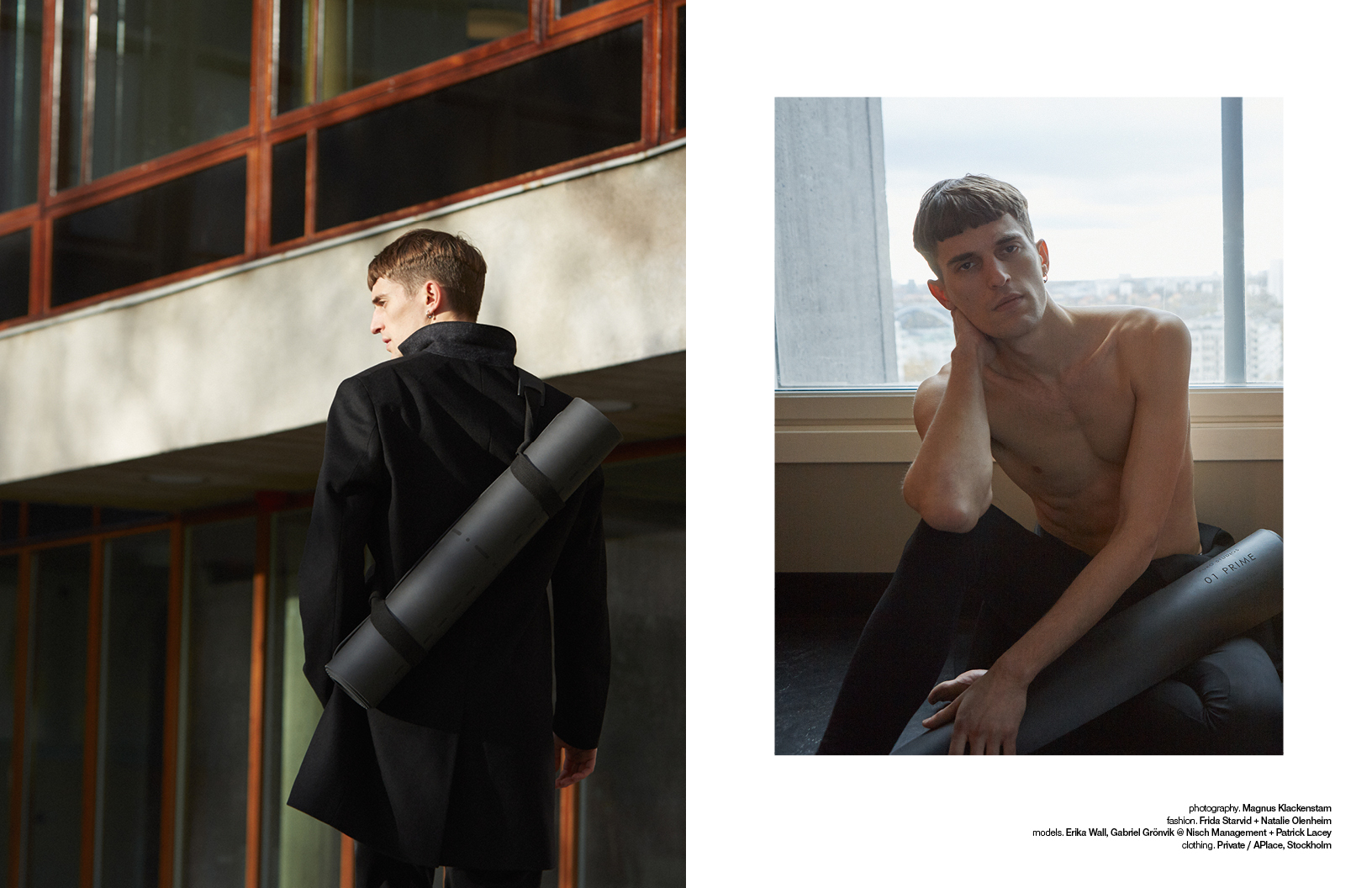
Furö Studios. 01 Prime + 03 Line
opposite
Furö Studios. 01 Prime
What do you hope for the future of Furö Studios?
Since the birth of Furö Studios, we have had an image in mind of a room with a black yoga mat on the floor. That is the start. Now if you start looking around, widening the circles gradually out from the mat in the centre, you might see a backpack beside the mat. A water bottle. Or a portable speaker. Widening the gaze even more, there might be a pair of shoes in a corner. An overcoat on a hanger. A graphic painting on the wall. In the end, the space in itself. When you practice yoga, the yoga mat is your temporary private space. As architects, we would love to investigate the next level of this space — the actual room. What kind of space can hold our longing for the spiritual? What does the contemporary sacred room or building look like? This might be the last product we end up doing — or the next one in line.
Discover more from Furö Studios on Instagram and on the label’s website.


Schön! Magazine is now available in print at Amazon,
as ebook download + on any mobile device












